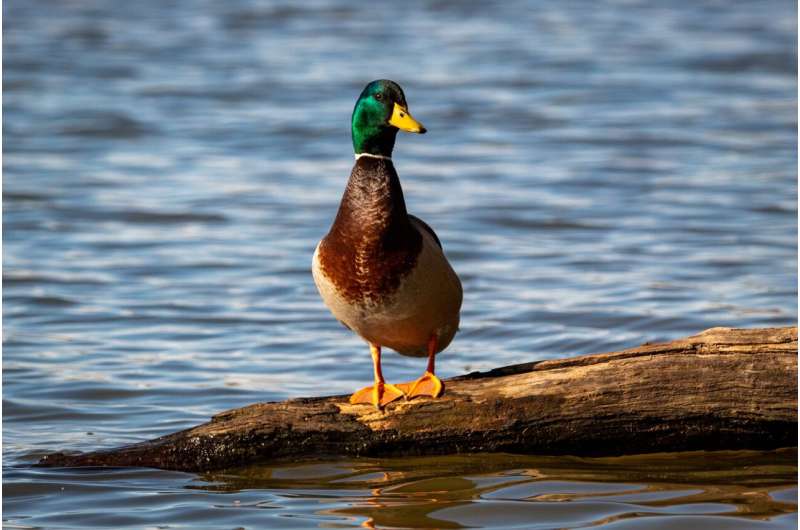This article has been reviewed according to Science X's editorial process and policies. Editors have highlighted the following attributes while ensuring the content's credibility:
fact-checked
reputable news agency
proofread
Avian botulism detected at California's resurgent Tulare Lake, raising concern for migrating birds

Wildlife authorities have detected avian botulism at California's resurgent Tulare Lake, raising concerns about potential die-offs during fall bird migrations.
Testing confirmed the disease in a mallard duck and a wading bird called a white-faced ibis collected at the lake in the southern Central Valley, the California Department of Fish and Wildlife said in a press release Thursday.
Crews are using airboats to collect dead and ill birds.
"Removing carcasses will be the first step of defense in preventing further spread," department scientist Evan King said in a statement.
Tulare Lake was once the largest freshwater lake west of the Mississippi River, fed by spring snowmelt from the Sierra Nevada. But the lake eventually vanished as settlers dammed and diverted water for agriculture, turning the lakebed into farmland.
The lake reappeared this year after California was hit by an extraordinary series of atmospheric rivers and by May water covered more than 160 square miles (414 square kilometers).
In June, Gov. Gavin Newsom's office said the water was beginning to recede. The feared flooding of communities was avoided.
With millions of waterfowl, shorebirds and other species expected to be drawn to Tulare Lake during migrations, the Department of Fish and Wildlife said it began air, ground and water surveys to look for avian botulism due to stagnant and warming water conditions.
The last big avian botulism event at Tulare Lake killed about 30,000 birds in 1983, during a previous reappearance of the lake, the department said.
Avian botulism causes paralysis and death. It is caused by a naturally occurring toxin-producing bacteria that enters the food chain.
Small outbreaks are not uncommon and usually occur in small bodies of waters such as park ponds or slow-moving sections of rivers and creeks, the department said.
The type of toxin found in the two birds is one that most frequently affects wild birds and typically is not associated with human botulism, the department said. Decomposing dead birds perpetuate the cycle of bacterial growth.
© 2023 The Associated Press. All rights reserved. This material may not be published, broadcast, rewritten or redistributed without permission.



















